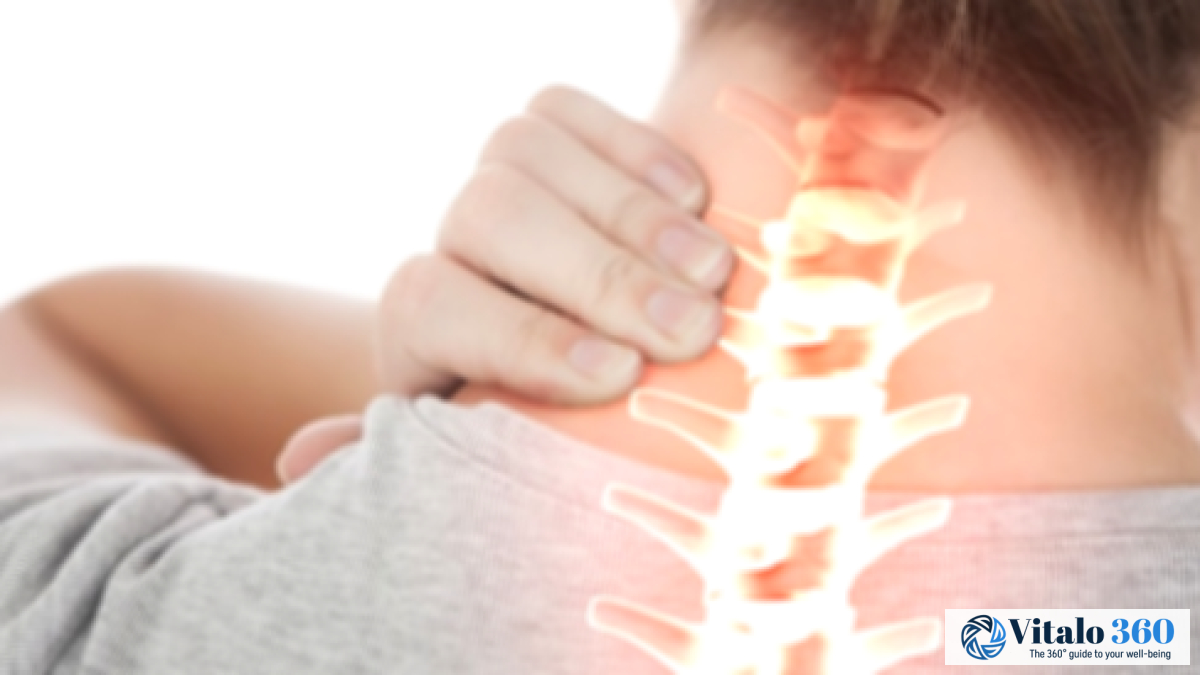Understand cervical disc issues: discover the causes, recognize the symptoms like neck pain or arm numbness, and explore treatment options such as physical therapy and medication for relief.
Okay, feeling that annoying twinge in your neck again? Or maybe it’s a sharp pain shooting down your arm? Could be more than just a crick; could be a cervical disc issue. But, like, what even *are* cervical discs, and why do they decide to betray us?
We’re gonna break it all down for you, in a way that doesn’t require a medical degree. We’ll explore what’s up with those discs, what makes ‘em go rogue, and what you can do about it.
- What Is a Cervical Disc?
- Causes of Cervical Disc Issues
- Symptoms of Cervical Disc Issues
- Treatment for Cervical Disc Issues
What Is a Cervical Disc?
Alright, so a healthy cervical disc is basically this awesome shock absorber sitting between the vertebrae in your neck. Think of it as a jelly donut – it’s got this tough outer layer, and a squishy, gel-like center. That center cushions the vertebrae, allowing for smooth movement.
But, what happens when the jelly oozes out? That’s kinda what happens with a herniated disc. The soft inner part pushes through a weak spot in the outer layer. This, um, can put pressure on nearby nerves and cause some serious discomfort. This is what we call a herniated cervical disc.
This condition, it’s worth noting, can occur in any part of the cervical spine, but it’s most common in the neck and upper back.
Cervical disc problems can cause significant pain and discomfort in the neck area, making movement of the cervical spine less fluid than one would like. It could even cause numbness in other parts of your body.
Causes of Cervical Disc Issues
So, why do these discs go haywire in the first place? Well, the main culprit is that wear and tear on the disc structure in the neck. That said, a bunch of factors play a role, and they include:
- Aging: As we get older, these discs tend to dry out, which reduces their flexibility and resilience.
- Cervical spine injuries: Injury resulting from physical activity, like contact sports or lifting heavy items, can cause damage to the disc.
- Lifestyle: Poor posture can wreak havoc, especially if you’re constantly hunched over a desk all day, which may increase the risk of experiencing disc problems.
- Weight: Being overweight puts extra pressure on the cervical spine, upping the chances of disc degeneration.
- Sudden forceful movements: Jerky movements or even upper body trauma can cause one or more cervical discs to slip.
You know, we often forget about the importance of preventative care. Simple things like proper lifting techniques and maintaining a healthy weight can save you from a whole lotta pain down the road! What about exercises tailored to strengthen the neck and back muscles? Incorporating a regular routine could act as a natural shield, improving stability and reducing the strain on our cervical discs. It seems like a small investment for a much bigger payoff, right?
Symptoms of Cervical Disc Issues
You might experience these symptoms as a result of a herniated cervical disc:
- Neck pain
- Tingling or numbness in the shoulders, arms, or hands
- Pain in the arm or shoulder
- Severe symptoms, especially if the disc is pressing on the spinal cord, such as:
- Muscle weakness, which can affect balance or coordination.
- Loss of reflexes.
- Burning or electrical shock-like pain radiating through the body down to the legs.
- Difficulty using hands and fingers for fine motor skills.
Treatment for Cervical Disc Issues
So, what do you do if you suspect a disc issue? Well, often, treatment starts with non-surgical methods, such as:
- Getting some rest.
- Adjusting daily activities.
- Taking pain medication and anti-inflammatories, as prescribed by your doctor.
- Physical therapy to alleviate pain caused by the herniated cervical disc, as suggested by your doctor.
If symptoms persist or worsen, your doctor might prescribe stronger medications, like cortisone injections.
Keep in mind that symptoms often improve quite a bit within 4-6 weeks of starting these treatments. But sometimes, when there’s significant pressure on the spinal cord and nerves, surgery might be necessary.
Surgical treatment options for cervical disc problems vary, and may involve relieving pain and restoring functionality with artificial discs rather than spinal fusions that might limit motion.
Key takeaways
- Cervical disc issues can be a result of aging, injuries or lifestyle factors.
- Seek physical therapy and medication to treat pain, though surgery might be required for more serious injuries.
- Take good care of your body by adopting a healthy lifestyle.
FAQ, Myth & Facts
Will cervical disc issues lead to paralysis?
While severe cases can cause nerve damage and weakness, paralysis is rare. Most people recover with treatment.
Is surgery always necessary for a herniated disc?
Nope! Most people get better with non-surgical treatments like physical therapy and medication. Surgery is usually a last resort.
Can exercise make a disc issue worse?
Some exercises can, especially high-impact activities. But, specific exercises prescribed by a physical therapist can actually help strengthen the muscles around your spine and support healing.
Are cervical disc issues just a part of getting older?
Age-related degeneration is a factor, but not the only one. Injuries, lifestyle, and genetics can also play a role.
blockquote {
margin: 20px 0;
padding: 20px;
border-left: 5px solid #eee;
font-style: italic;
color: #777;
}
I had this nagging neck pain for months, and I just chalked it up to stress. But then the pain started shooting down my arm, and my fingers went numb. Turns out, it was a herniated disc. Physical therapy and some lifestyle changes, and I’m feeling so much better!
I was terrified when my doctor mentioned surgery, but honestly, after trying everything else, it was the best decision I ever made. I’m back to doing the things I love without that constant, throbbing pain.
I used to think neck pain was just something I had to live with. But since I started focusing on good posture and doing regular neck exercises, the difference is amazing. It’s all about taking care of your body!
So yeah, dealing with neck pain or arm numbness isn’t fun, and it’s easy to brush it off. But, understanding what’s going on with your cervical discs can make a huge difference. And remember, we’re here to help you navigate these health puzzles, one step at a time!










